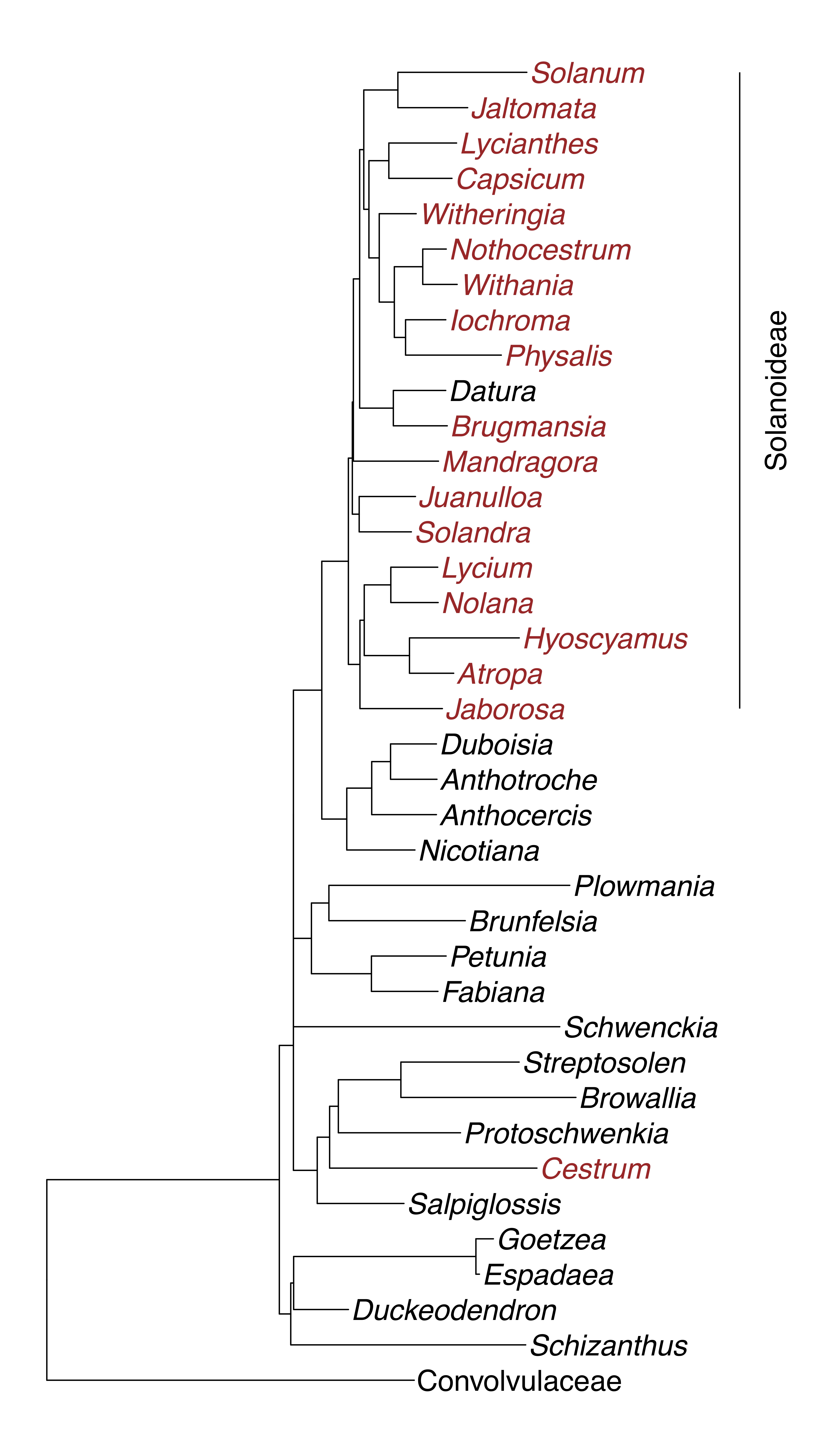Evolution of Fleshy Fruit

Throughout the evolution of flowering plants (angiosperms) there have been many evolutionary transitions from an ancestral dry fruit to a more derived fleshy fruit. My dissertation research examined the genetic mechanisms behind this economically and ecologically important trait in the nightshade family of plants (Solanaceae).

In nightshades, early-diverging species like tobacco or petunia generally have a dry, dehiscent, capsular fruit, while later-diverging species like tomato or pepper have an edible, fleshy berry. Along with another grad student in Amy Litt’s lab at UCR, we investigated the developmental and evolutionary basis of dry vs fleshy fruits. My research specifically focused on the dry-fruited species desert tobacco (Nicotiana obtusifolia), but I extended the focus of this work into wild tomato (Solanum pimpinellifolium), Arabidopsis thaliana, and melon (Cucumis melo).
This project has had several phenomenally skilled past undergraduate ‘alumni’.
Jessica Le

Kevan Elkins

Ashley Henry, graduate student at UW-Madison

Victoria Rios

